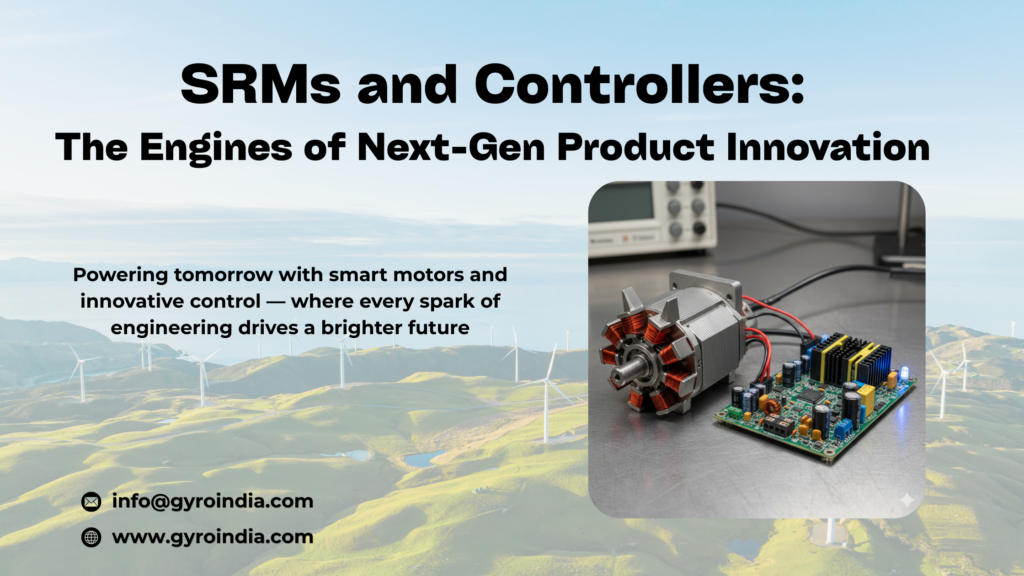SRMs and Controllers: The Engines of Next-Gen Product Innovation
 SRMs and Controllers: The Engines of Next-Gen Product Innovation
SRMs and Controllers: The Engines of Next-Gen Product Innovation
When you think of innovation in motors, you probably imagine faster machines or smaller, smarter devices. But behind these game-changing advances are SRMs (Switched Reluctance Motors) and their ever-reliable partners, controllers. Together, they are quietly becoming the engines of next-generation product innovation, shaping industries and powering technologies that you use every single day.
Why SRMs Are Stealing the Spotlight
If you’re new to the concept, SRMs might sound complicated, but they are surprisingly simple once you break them down. Unlike traditional motors that rely heavily on permanent magnets, SRMs work by exploiting magnetic reluctance, which means they avoid expensive rare-earth materials. That makes them not only cost-effective but also sustainable in a world where supply chains for rare earths are constantly under pressure.
For you, this means motors that are more affordable, easier to maintain, and better suited for industries that value durability and long-term reliability. Whether it’s in electric vehicles, industrial automation, or renewable energy applications, SRMs offer a strong balance of efficiency and robustness. It’s no wonder they are being recognized as the next big thing in motor technology.
Controllers: The Unsung Brains Behind SRMs
Now, while SRMs are brilliant on their own, they truly shine only when paired with the right controller. Think of it this way: the SRM provides the raw energy and mechanical drive, but the controller ensures that everything runs smoothly, efficiently, and at the right speed. Without a controller, your SRM is like a powerful car engine without a skilled driver.
Controllers manage timing, current flow, and performance optimization, allowing SRMs to deliver torque exactly when and where it’s needed. For industries, this translates into precision, reduced energy waste, and motors that adapt to changing loads without breaking a sweat. For you as an end user, it means smoother performance, longer product life, and fewer headaches with maintenance.
The exciting part is that modern controllers now integrate with digital technologies like IoT and AI-powered analytics. This gives you smarter systems where motors can predict faults, adjust to efficiency demands, and even communicate with other parts of your operation. The result? More uptime, fewer breakdowns, and a future where machines practically run themselves.
The Role of SRMs and Controllers in Next-Gen Products
You might be wondering where exactly you’ll encounter SRMs and controllers in action. The answer is: almost everywhere innovation is happening today.
Take electric vehicles, for example. Automakers are testing SRMs because they deliver high torque, wide speed ranges, and avoid the costly dependency on rare-earth magnets. Paired with intelligent controllers, they become a powerhouse of efficiency, giving you longer range and more reliable performance.
In renewable energy, SRMs with advanced controllers are helping wind and solar installations run more efficiently by adjusting performance based on real-time data. Meanwhile, in industrial automation, factories use SRM-powered systems for robotics, conveyors, and heavy-duty applications where efficiency and durability matter the most.
Everywhere you look, SRMs and controllers are working together to bring smarter, faster, and greener technologies to life.
Opportunities for Indian Industry
India has a unique chance to lead the world in developing SRMs and controllers for the next generation of innovation. With the “Make in India” initiative pushing for self-reliance, local manufacturers and engineers can focus on designing SRMs that are optimized for domestic needs. Paired with controllers designed to integrate with digital monitoring tools, these solutions could help Indian industries reduce costs and build future-ready systems.
For you, whether you’re in manufacturing, EV development, or energy, this means access to smarter technologies built right at home. The opportunities to innovate and co-create are endless, and SRMs with advanced controllers might just be the foundation India needs for a sustainable, competitive edge.
A Future Powered by Smart Partnerships
When you step back, it’s clear that SRMs and controllers are not just components; they’re the engines of modern product innovation. The motor gives the strength, the controller gives the intelligence, and together they unlock possibilities that would have seemed impossible a few decades ago.
For you as a consumer, this translates into smarter products that perform better, last longer, and cost less. For manufacturers and engineers, it means endless opportunities to innovate and bring new ideas to market faster. The combination of SRMs and controllers is shaping a future that is efficient, sustainable, and full of possibilities.
So, the next time you think about the future of motors, remember — it’s not just about raw power. It’s about how SRMs and controllers, working in perfect harmony, are becoming the engines that drive next-generation innovation forward.
Learn more: Co-Creation and Partnerships: Ideas in Action

Leave a Reply